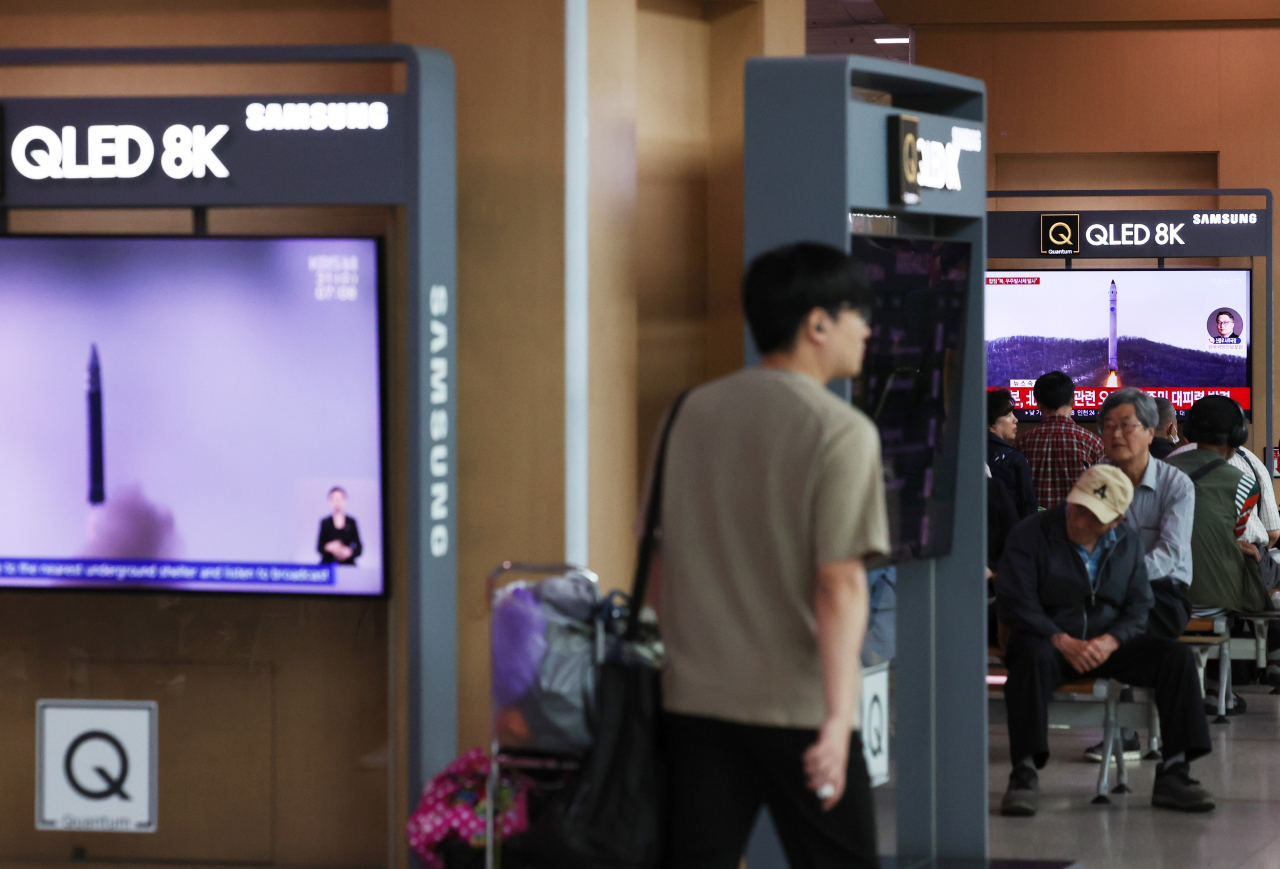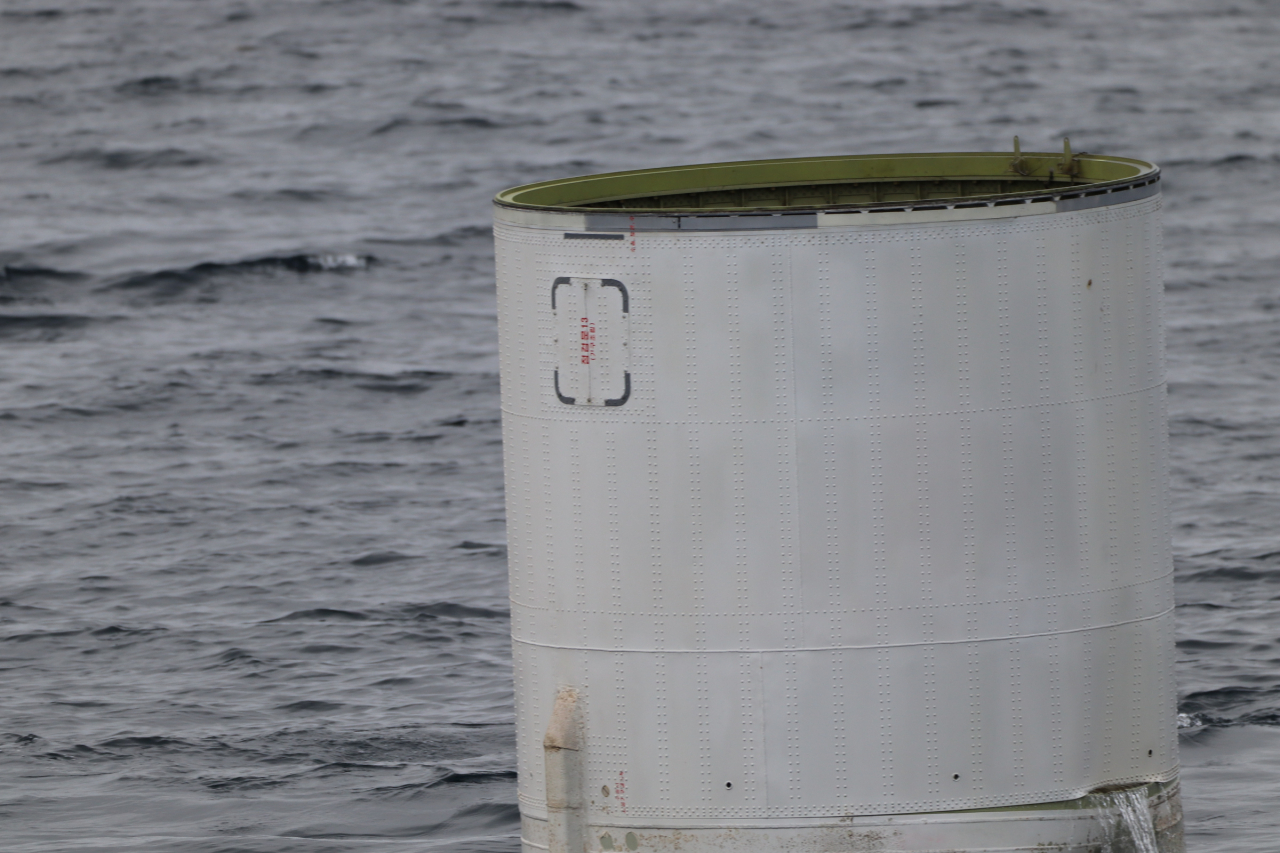
North Korea’s attempt to launch its first-ever military reconnaissance satellite into orbit ended in failure Wednesday, and briefly put South Korea and its neighbors on high alert when it disappeared from the planned trajectory. It was later found to have crashed into the sea.
In a rare move, Pyongyang promptly acknowledged the failure of its attempt, but said it would conduct another launch “as soon as possible,” adding more pressure on South Korea and its security partners -- the US and Japan -- which have been stepping up military cooperation to deter the reclusive regime’s escalating missile threats.
North Korea’s National Aerospace Development Administration launched the spy satellite Malligyong-1 using the newly developed space launch vehicle Chollima-1, according to North Korea’s state-run Korean Central News Agency.
North Korean state media issued a statement at 9:05 a.m. -- considered swift but not unprecedented -- to provide an explanation for the failure, referring to it an “accident” that occurred during the launch.
North Korea said the launch vehicle lost propulsion due to an abnormal startup of the second-stage engine. Consequently, the launch vehicle crashed into the West Sea after separation of the first stage.
The unnamed NADA spokesperson attributed the failure to the “lack of reliability and stability of the new-type engine system applied” to the satellite carrier, as well as “unstable characteristics of the fuel used.”

The South Korean military confirmed the failure of what North Korea claimed to be a “space launch vehicle,” releasing several photos of what it presumed to be a component of the launch vehicle salvaged by the military in waters between South Korea and China on Wednesday morning.
The projectile was detected firing southward from the area of Tongchang-ri, North Pyongan Province, at around 6:29 a.m. It then flew over far west of the South Korean island of Baengnyeongdo, Incheon, triggering an air raid siren.
But the trajectory of the launch vehicle deviated from the flight path previously indicated by North Korea in its notification to the Japanese government. The launch vehicle disappeared from radar and did not reach the designated point as expected.
“The launch vehicle descended with abnormal flight into the sea approximately 200 kilometers west of the island of Eocheongdo in the West Sea,” South Korea’s Joint Chiefs of Staff said, adding that the military promptly identified and salvaged the component in the area of the North Jeolla Province island at around 8:05 a.m.
The salvaged component fell into a “provisional measures zone” that overlaps with the exclusive economic zones of South Korea and China. Both countries have agreed to allow access to Chinese and South Korean fishing vessels in that area.
The military initially assessed that the retrieved object is the cylindrical interstage component that connects the first and second stages of the rocket.
However, the JCS said that "further analysis has been underway in coordination between South Korea and the US."
South Korean military officials said that additional analysis is necessary to determine the causes of the failed launch during a closed-door briefing Wednesday morning. They refrained from confirming the credibility of North Korea’s state media report. The type of fuel or fuels used by North Korea remains uncertain.
Military officials acknowledged that North Korea had expedited preparations for the satellite launch relative to previous cases.
Chang Young-keun, director of the missile center at the Korea Research Institute for National Strategy, assessed that the failure in igniting the engine of the second stage has been presumed to stem from a lack of adequate ground tests aimed at ensuring the reliability of the engine combustion.
Another potential factor that could have contributed to the failure is North Korea’s attempt to adjust and alter the composition ratios of the rocket fuel, deviating from ratios used in previous launches.
Chang pointed out that it typically takes at least six months to thoroughly investigate all the fundamental causes of a failure, address the underlying issues and ensure a successful launch.
“But in the case of North Korea, there is a high probability that the country will conduct a minimal investigation into the cause of the failure, identify major issues, fix errors and proceed with another launch promptly,” he said. “It is possible to conduct the second launch within a few weeks.”
Yang Moo-jin, a professor at the University of North Korean Studies in Seoul, forecast that North Korea would make a prudent decision on when to conduct another launch as the “failure of the second launch will impose a burden on the regime.” But he added North Korea would seek to go ahead with the second launch in June in light of extreme weather later in the summer.
“North Korea would have decided to launch on the first day of the announced period in light of weather conditions such as typhoons. But the rush to proceed and the failure has resulted in it losing face,” Yang said.
The launch came a day after North Korea on Tuesday informed the International Maritime Organization of its scheduled satellite launch between May 31 and June 11.
Ri Pyong-chol, vice chairman of the Central Military Commission of the North's ruling Workers' Party of Korea, also said Tuesday that North Korea would launch its first military reconnaissance satellite in June to track and monitor “dangerous military acts of the US and its vassal forces” in real time.
But Ri’s statement was one of numerous statements of North Korea expressing its intention to launch its first spy satellite since the eighth party congress in January 2021.
The launch of a satellite-equipped launch vehicle on Wednesday was the first in seven years, since the launch of the Kwangmyongsong-4 long-range rocket on Feb. 7, 2016. According to North Korea’s claims, this launch also represents its seventh satellite launch since August 1998, including its failure in launching the Unha-3 satellite launch vehicle in April 2012.
But space launch vehicles and ballistic missiles, including intercontinental ballistic missiles, share certain technologies that can be identical or interchangeable. The primary distinction lies in the payload, where a space launch vehicle carries a satellite while a missile carries a warhead.
The US Indo-Pacific Command strongly condemned the satellite launch as a “brazen violation of multiple unanimous UN Security Council resolutions,” adding that the launch involved technologies directly linked to North Korea's intercontinental ballistic missile program.





